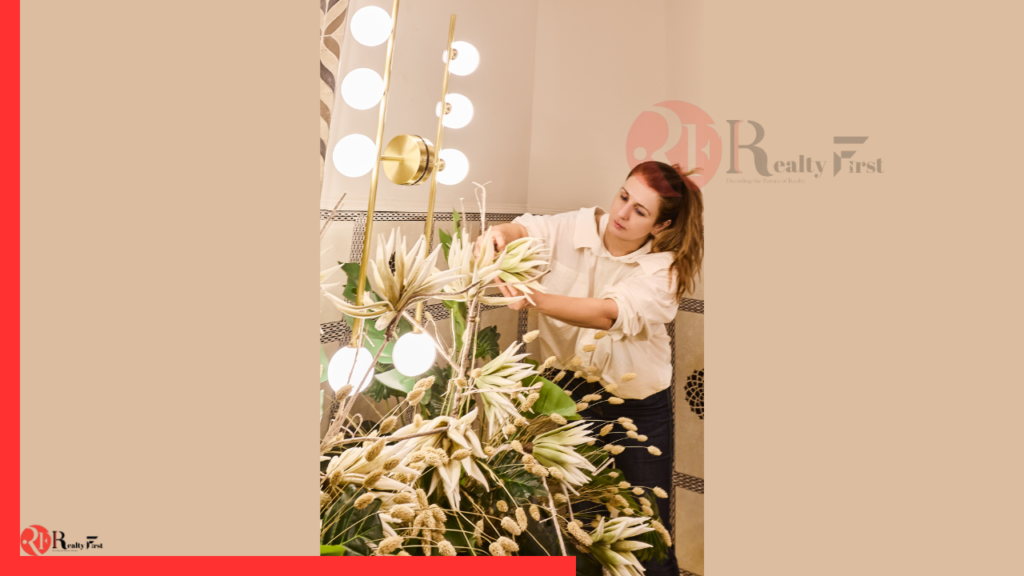By Sonali Ashar, Founder of Sonali Ashar Designs
Sustainability has been a buzzword over the past decade, and with good reason. As climate awareness grows, there is an increasing focus on incorporating eco-conscious practices into all aspects of life—including interior design. Sustainable design prioritises the creation of beautiful, functional spaces while being mindful of the environment and conserving the planet’s resources. It’s about achieving a balance between aesthetics, functionality, and ecological responsibility.
Here are five practical ways to transform your interiors into a sustainable haven while keeping your style intact:
- Embrace Energy Efficiency
Energy efficiency is at the core of sustainable interior design. Thoughtfully optimising lighting, heating, cooling, and ventilation systems can significantly reduce energy consumption. Start with architectural choices like oversized windows, which flood spaces with natural light while cutting down on the need for artificial lighting. Adding mirrors to reflect light can also amplify the brightness in a room, reducing dependency on electricity during daylight hours.
Smart technologies further enhance energy efficiency. Use programmable thermostats, energy-efficient appliances, and motion sensors for lights. Ventilation systems that regulate temperature and humidity not only improve comfort but also reduce utility costs. These steps not only lower energy bills but also contribute to a greener planet by minimising carbon emissions.
- Get Creative with Upcycling
Upcycling is a sustainable approach that transforms old or unused materials and furniture into something new and functional. This not only reduces waste but also infuses character and uniqueness into a space.
Repurpose vintage furniture or refurbish existing pieces with a fresh coat of eco-friendly paint. Transform wooden pallets into coffee tables, or give a second life to old glass jars by using them as pendant lights. The charm of upcycled items lies in their history and individuality, which often cannot be replicated by mass-produced decor.
- Incorporate Biophilic Design
Biophilic design is all about bringing nature into your living spaces, and it’s one of the most impactful trends in sustainable interiors. By integrating greenery, you can create a calming and rejuvenating environment while improving air quality.
Consider adding potted plants, a green bio-wall, or hanging planters to your interiors. These elements not only beautify your home but also have significant health benefits, such as reducing stress and improving focus. For instance, a South Mumbai residence we designed included a stunning floor-to-ceiling bio-wall on the balcony, offering a refreshing escape amidst the bustling cityscape. This incorporation of nature added visual appeal while creating a sanctuary for the residents to unwind.
- Make Mindful Material Choices
Choosing durable and eco-friendly materials is key to sustainable design. Focus on materials that are natural, renewable, and long-lasting. These choices ensure your interiors are warm, inviting, and timeless, reducing the need for frequent renovations.
Cork, for example, is a sustainable superstar. It is 100% recyclable, renewable, waterproof, and lightweight, with excellent insulation properties. Interestingly, cork trees begin regenerating their bark immediately after it’s harvested, making it a truly sustainable option.
Similarly, bamboo is an eco-friendly favourite due to its rapid growth and versatility. Restored wood is another excellent choice, as it prevents the need for cutting new trees while lending a rustic charm to interiors. Natural stones, known for their durability and elegance, are equally popular, offering a timeless aesthetic with minimal environmental impact.
- Design for Longevity and Timelessness
Sustainable interiors are not about chasing fleeting trends. Instead, they focus on timeless designs and durable materials that stand the test of time. This approach reduces the frequency of renovations and replacements, conserving resources in the long run.
Opt for classic colour palettes, versatile layouts, and enduring styles that can adapt to changing tastes. Incorporating natural materials like stone, wood, and cotton lends warmth and texture while maintaining a neutral, timeless appeal.
Incorporating sustainability into interiors doesn’t require sacrificing style or comfort. From energy efficiency and upcycling to biophilic design and mindful material choices, there are countless ways to create eco-conscious spaces that are both beautiful and functional.
Sustainable design is not just a trend; it’s a lifestyle choice that prioritises the planet while enriching the spaces we inhabit. By adopting these principles, you can create interiors that are not only aesthetically pleasing but also deeply respectful of the environment—a legacy of beauty and responsibility for future generations.













